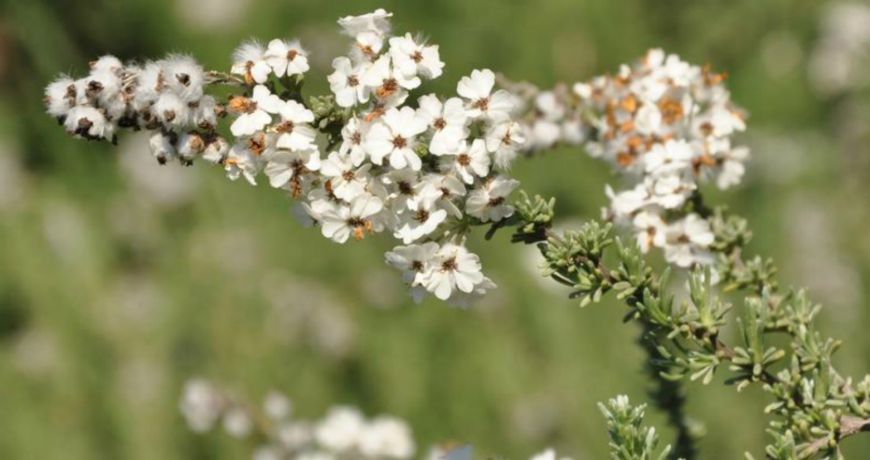Monograph Cape Snowbush
- 2 June 2013
Eriacephalus africana
By Wendy Maddocks-Jennings
Botanical Information
Taxonomy: Eriocephalus africanus
Asteraceae Family
Other synonyms
African or Wild Rosemary
Description
It is a bushy aromatic plant and is native to South Africa. It seems its physical appearance changes depending where it is grown with leaves changing to a silver colour and yellower flowers. It grows to approx. 1 metre high and across. The fluffy seed heads look like cotton wool. The essential oils is steam distilled usually from wild plants using traditional methods. It seems distillation occurs when the plant is flowering. The essential oil is a pale to dark yellow.
Chemical Analysis
| Linalyl acetate | 18% para cymene | 3.5% |
| 1,8 cineol | 4.3% camphene | 2.8% |
| linalool | 2.5% camphor | 2.4% |
| sabinene | 2.3% |
Traditional uses
Used as a natural hair tonic, decongestant, cold and flu reliever and easing of muscular pains
Aromatherapy Uses
Anecdotal accounts of helping with memory, for muscular pain, tension headaches. It is believed to be a nerve stimulant, antioxidant and antibacterial. Other uses include as an anti-depressant, anti-spasmodic,
carminative, decongestive, diuretic and stomachic. It is also believed to stimulate and clear the mind, as well as being an effective agent to fight colds, coughs, flu, and treat insomnia.
Blending Notes
It has a sweet, floral slightly camphoraceous/medicinal aroma - use as a middle note. Due to its medicinal aroma it may overwhelm a blend if you arenʼt careful. It would work with all the labiatae family plus German or Roman chamomile, frankincense, litsea, lemon myrtle, ginger, benzoin, sandalwood.
Research Studies
“The genus Eriocephalus, commonly known as ʻwild rosemaryʼ, ʻCape snow bushʼ, ʻkapokbosʼ or ʻasmabossieʼ, belongs to the family Asteraceae, of the tribe Anthemideae. It is endemic to southern Africa and is comprised of 32 species, of which several are economically important as traditional herbal remedies and as perfumes in fragrance industries. The species may be an important potential source for new and novel drugs for the treatment of various diseases, hence warrants further research.
Ref: Njenga,EW, van Vuuren, S.F. & Viljoen, A.M. (2005), An investigation into the antimicrobial activity of the genus Eriocephalus L. species South African Journal of Botany 2005, 71(1): 81–87

